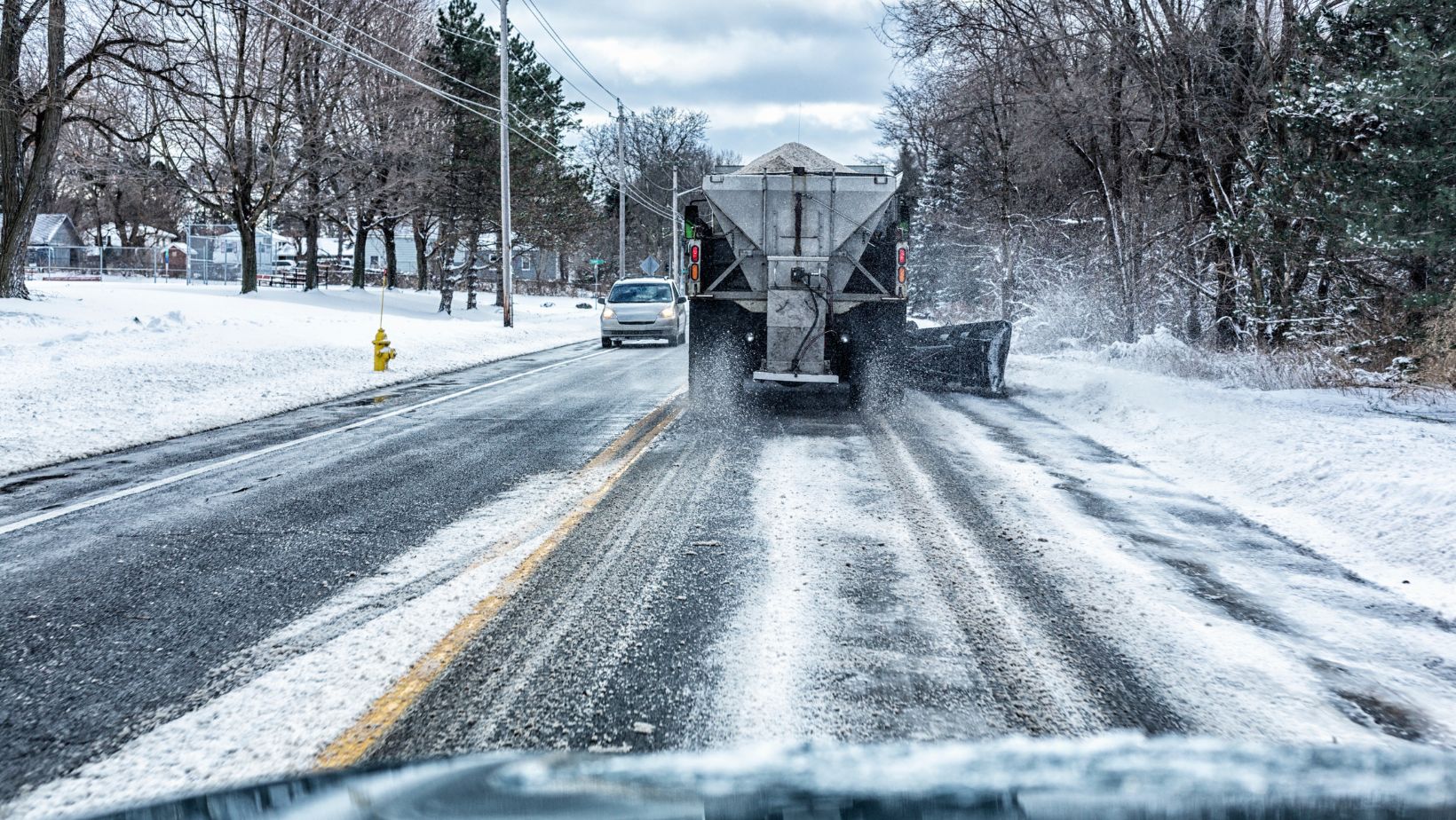How to Safely Remove Road Salt from Your Vehicle

In the winter months, road salt is a required addition to safe driving in quite a few areas. On the one hand, it contributes to avoiding accidents on the ice-covered roads, but on the other, it may cause severe damages to the cars when it is removed in a wrong way. Road salt is extremely corrosive, and it can corrode the paint, undercarriage of a car and corrode the metal parts with time. This corrosion results in rust that does not only deteriorate the look of the car but is also known to result in expensive repairs and loss of life span.
Knowledge regarding the removal of road salt is also part of the vital information when taking care of vehicles for winter. The right cleaning does not only preserve the state of the car, but also its interior. Similar to the cleaning of the car interior to preserve the surfaces you can see in the interior of a vehicle, the regular salt removal is an important component of the exterior care in colder seasons.
Understanding the Risks of Road Salt
The road salt is mostly formed of sodium chloride or other combinations of chemicals and the ideal way by which it functions is reducing the freezing point of water. Although this makes the road safer to all drivers, it adheres to the surfaces of vehicles and forms a residue that locks moisture. A combination of this increases rust, particularly on unprotected metal surfaces such as the undercarriage, wheel wells, and brake lines.
Failure to correct this may then lead up to buffer deposits that may start eating on the paint and forming rusting spots. These spots can begin as small and even expand underground, making it hard to detect them unless large damage has been done. The major way of preventing this kind of wear is regular and complete cleaning habits.
Washing the Vehicle Thoroughly
The best solution of the road salt removal is by washing the car as quickly as possible after contact. Begin by washing the car using plain water to deactivate and wash away the surface salt before subsequent addition of any form of soap. Pay some special attention to the areas that tend to accumulate dirt including the lower body panels, wheel wells, and bumpers. A pressure washer or high-pressure hose comes in handy in the removal of salt in areas that are hidden or inaccessible.
Once the first rinse is done, rinse the exterior using a car safe soap combined with warm water. Wet a microfiber mitt or soft sponge and apply soap to not scratch the paint. Wash, again, thoroughly with no cleanser or salt bits left. Repeat this procedure on a regular basis through the winter to reduce corrosion and long term exposure.
Cleaning the Undercarriage Properly
The undercarriage of a vehicle is one of the most susceptible features, in winter. This is usually neglected but it will be in front of the road, exposing itself to excess salt. The presence of rust on the undercarriage may result in brake problems as well as weakened suspension parts and structural problems should one fail to tackle them.
The best way to wash the undercarriage is by using a hose with an underbody spraying head or take your car to the car wash that has an undercarriage sprinkler option. The tools assist in washing out salt that is deep in crevices and flat surfaces under the vehicle. Winter car detailing is probably one of the basic laundry services of car undercarriages as it preserves the necessary elements of the car by keeping them rust and wear-free.
Protecting Surfaces After Cleaning
After the vehicle is washed and dried, a supplementary coat of protecting wax or sealant can then be used to cover the vehicle to ensure that no further damages in the future will affect the paint within the vehicle. The products form a protective surface, which causes salt and dirt to be less sticky to the surface and cleaning your vehicle would be easier in the future thus prolonging the life of your vehicle’s finish.
Many car detailing experts prescribe the application of ceramic protection or even winter waxes which are more powerful and long-lasting. No matter what the product is, such a level of protection may considerably lower the damaging impact of salt exposure during winter.
Checking and Cleaning Interior Surfaces
Even though road salt can be dealt with since it is mainly concentrated on the outside of the car, it could be transferred into the car via shoes and equipment, particularly in the floor mats and carpets. With time this may lead to discoloration, accumulation of moisture and odor within the cabin. When you hire a car interior cleaning during the winter season, you are able to put these problems in check.
Place weatherproof or rubber floor mats on the carpet during the winter months so that the salt does not have a chance to soak into the carpet. Vacuum often and wash mats using water and vinegar to neutralise salt deposit. This makes the interior cleaner and prevents long-term damages to upholstery and floors in general.
Maintaining a Regular Cleaning Schedule
Cleaning your vehicle ought to become a habit during winter as opposed to doing it once. Make an objective of cleaning the car once or twice, each week, relying on the street conditions and salt aggressiveness. This minimizes buildup and it does not make the buildup even bond with the car.

Planning the road salt removal when doing the general car detailing will mean further protection and an all-over-the-season look that will remain consistent. Winter cleaning becomes as important a regular maintenance of your car as changing the oil and checking the tires.
Final Thoughts
It is not a cosmetic issue to remove road salt on your vehicle. It is a feasible forward move in safeguarding your project and long term performance. Salt can have a negative effect on the exterior and undercarriage of your car so by applying the correct tools and methods you can minimize its presence.
Having taken care and attention constantly, your car will be clean, sheltered, and not exposed to the corrosive actions of salt during the winter. As the cleaning of the car interior can aid comfortability and hygiene, appropriate removal of the salt strengthens the worth and durability of your car throughout the seasons.
What's Your Reaction?
Newly middle-aged wife of 1, Mom of 3, Grandma of 2. A professional blogger who has lived in 3 places since losing her home to a house fire in October 2018 with her husband. Becky appreciates being self-employed which has allowed her to work from 'anywhere'. Life is better when you can laugh. As you can tell by her Facebook page where she keeps the humor memes going daily. Becky looks forward to the upcoming new year. It will be fun to see what 2020 holds.


